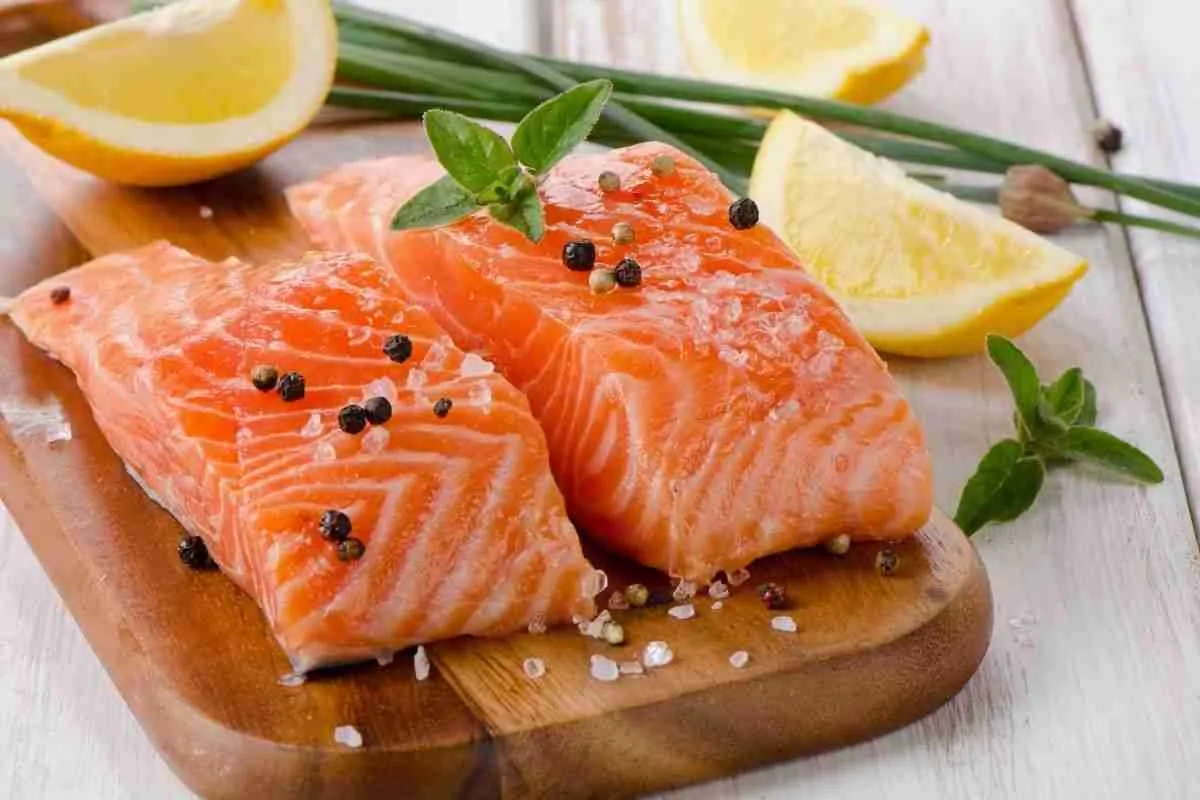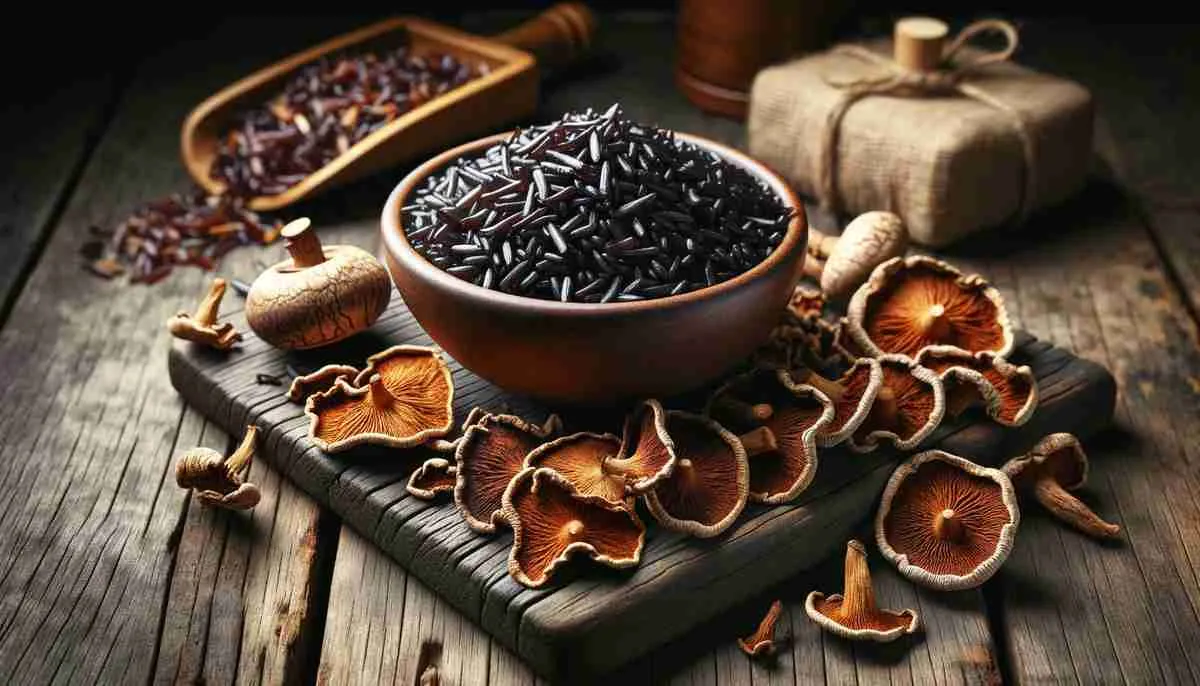How to Build Flavor in One-Pot Caribbean Meals
One-pot meals are the heartbeat of Caribbean cooking. They are comforting, efficient, and a masterclass in flavor fusion. Think of a rich, deeply colored stew, a vibrant, savory rice and beans, or a fragrant curry—all cooked to perfection in a single pot.
But what separates a good one-pot dish from a truly great one?
The secret lies in the art of flavor-building—a deliberate, step-by-step layering of ingredients that creates a complex, unforgettable taste profile. It’s more than just throwing spices in a pot; it’s a culinary dance of heat, aromatics, herbs, and time.
Here is your guide to mastering the flavor foundation of any Caribbean one-pot wonder.
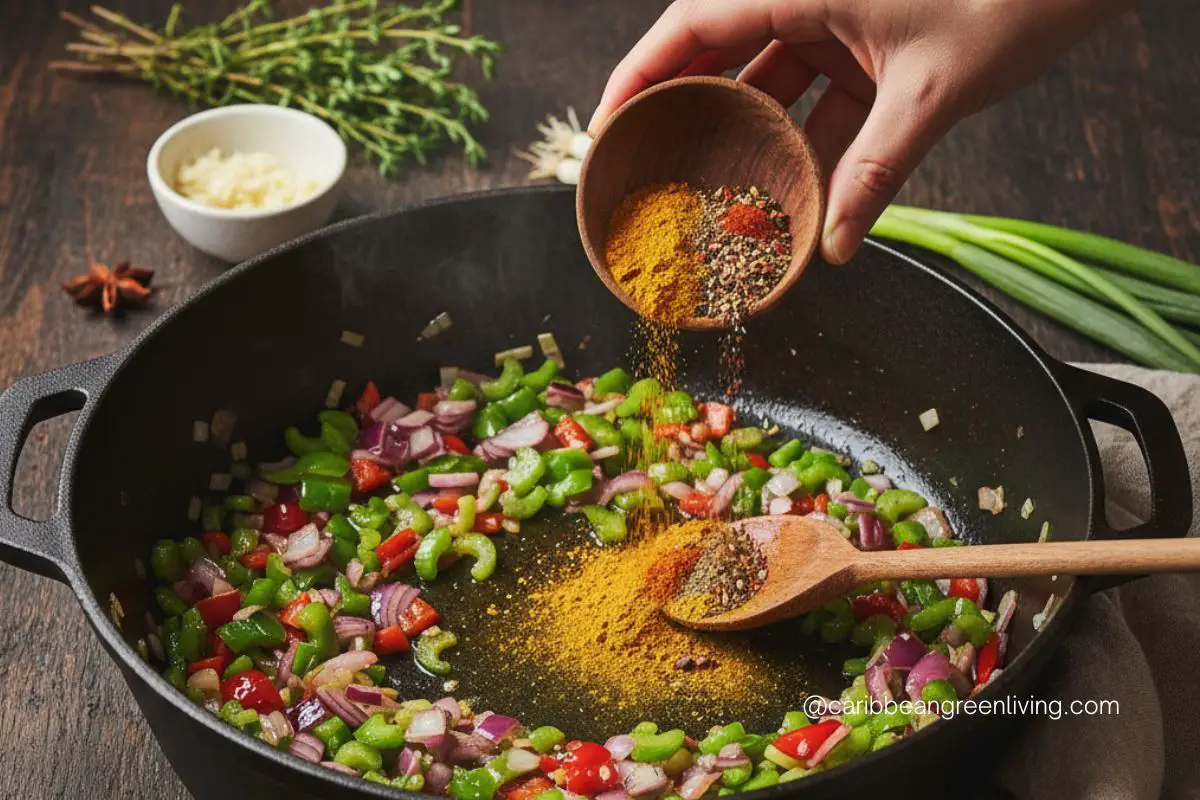
1. The Power of the Aromatic Base in one-pot Caribbean meals
Every great Caribbean one-pot meal starts with a potent aromatic foundation. This is the first layer of flavor that saturates the oil and permeates every subsequent ingredient.
- The Sauté: Begin by sautéing your foundational aromatics in hot oil. This typically includes chopped onions or scallions, garlic, parsley and bell peppers (the Caribbean’s version of the “holy trinity”).
- The Spice Bloom: Once the vegetables soften, add your dry spices, like curry powder, seasoning salt, ground cumin, or a multi-purpose seasoning blend, and toast them for a minute or two. This is called blooming the spices. Heat releases their essential oils, transforming their flavor from dusty to intensely aromatic, ensuring their flavor carries throughout the dish.
Shop for seasoning blends and spices on Noubess.com and Amazon.com
2. The Unsung Hero: The Green Seasoning
The most critical difference between a plain meal and a truly authentic Caribbean dish is the use of a fresh, herbaceous marinade or seasoning paste. For many islands, this is called “green seasoning,” but in Haiti, it is known as Epis.
- What is Epis? Haitian Epis is a vibrant, potent blend of fresh herbs (like parsley, thyme, and scallions), garlic, peppers (often a Scotch Bonnet for heat), and often a splash of citrus or vinegar. It is the culinary bedrock of Haiti, used to marinate meats and season everything from rice to stews.
Want to learn more about? Click this on link: What is Haitian Epis
- Layering with Epis: Once your meat (chicken, beef, or fish) has marinated for several hours (or even overnight!) in Haitian Epis, you add it to your pot. The herbs, garlic, and subtle heat from the marinade get seared and cooked into the pot’s base, adding a fresh, deep, and savory dimension that dry seasonings alone can’t achieve. This step is non-negotiable for building genuine Caribbean flavor.
Check out our blog post about 15 Essential Ways to Use Haitian Epis.
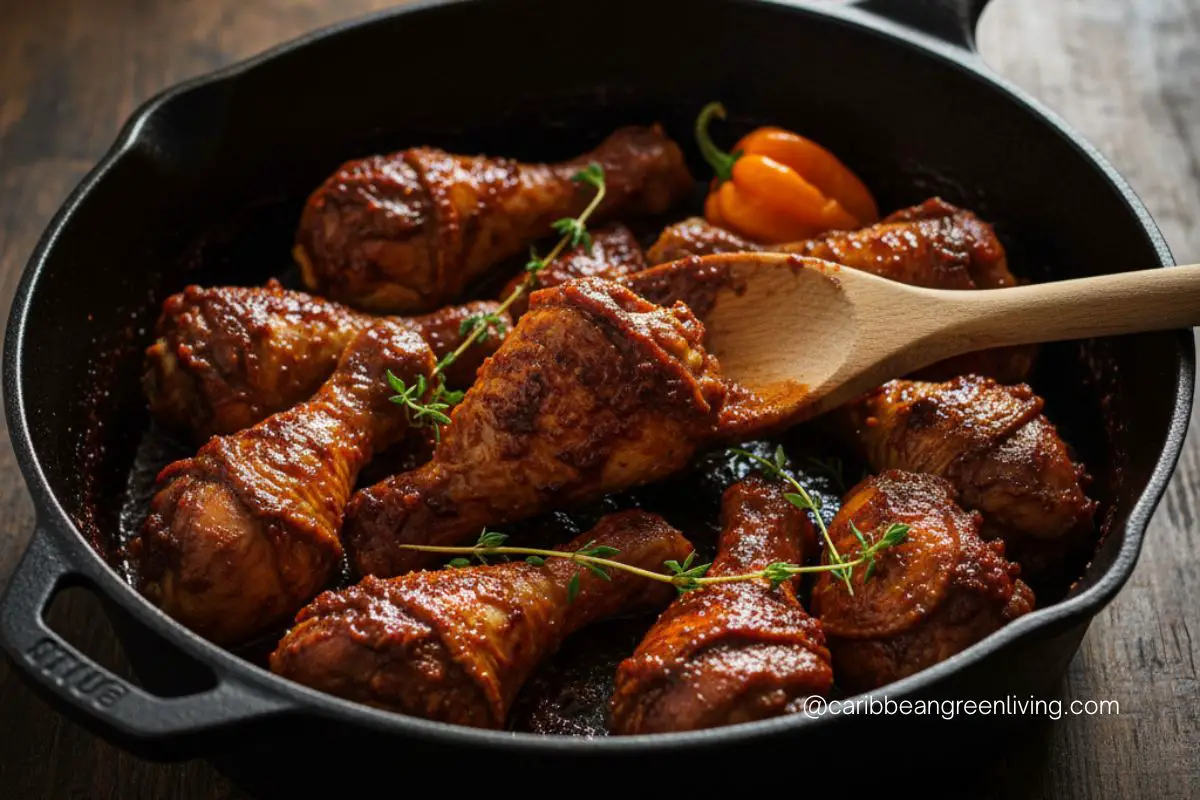
3. The Depth of Browning and Caramelization
For many dark Caribbean stews, like those from Jamaica, Trinidad, and throughout the islands, a beautiful deep color and a layer of sweet-savory complexity comes from the magic of browning.
- Burnt Sugar (Pelau Method): For dishes like Trinidadian Pelau, sugar is caramelized (or “burnt”) in oil until it turns a deep, nearly black amber. The meat is then tossed in this dark, rich syrup, sealing in its juices and giving the final dish a signature color and a bittersweet umami note.
- The Tomato Paste Start: Many cooks also begin by adding tomato paste to the pot with a little oil after the aromatics. By browning the Epis-marinated meat on slow heat and turning it, the tomato paste caramelizes and darkens, locking in a deep, savory foundation for the rest of the stew.
- The Saucée (Natural Browning): The most common way to get all the authentic, natural flavors is to let the cooking liquid (the saucée or gravy) evaporate a bit, leaving just a little in the pot. Under low fire, allow the meat to brown slowly in its own concentrated juices. You may need to add a small amount of oil just to kickstart the caramelization process. This slow, patient technique concentrates the natural flavors of the meat and herbs, resulting in a tantalizing, juicy final product. This process takes longer and requires patience, but the final product is an unbelievable taste of natural and juice flavors.
- Browning Sauce: Many cooks also use a store-bought or homemade browning sauce (a molasses-based liquid) to achieve a similar deep, rich hue and flavor in their stews and sauces more quickly.
4. Simmering to Perfection
The final, and most patient, step in one-pot flavor-building is the long, slow simmer. One-pot dishes are meant to be cooked low and slow to allow the layered flavors to finally marry.
- Building the Broth: This is when you add your liquid (broth, coconut milk, or water) along with heartier flavor additions like whole sprigs of fresh thyme, a bay leaf, and a whole, pierced Scotch Bonnet pepper (for flavor without overwhelming heat).
- The Flavor Exchange: As the liquid bubbles, the flavors begin to circulate. The caramelized sugar or browning sauce melts into the liquid, the Epis releases its final aromatic oils, and the meat or vegetables become fall-apart tender, shedding their richness into the developing sauce. This slow process is key, especially when making vegetarian stews like Haitian Legim or any other hearty Caribbean meatless or meat stew, as it gives the juices from the fresh ingredients time to fully combine. The starches from rice, beans, or root vegetables thicken the sauce, creating the rich, velvety texture that defines Caribbean comfort food.
- The Sauce Gold: This rich sauce is why many enjoy stews served alongside rice or boiled root vegetables. But the ultimate enjoyment? Taking a piece of bread and scooping up every last bit of the leftover sauce from the pot! Don’t worry about what anyone says—that slow-simmered sauce is pure gold, and you are absolutely allowed to lick your fingers! LOL
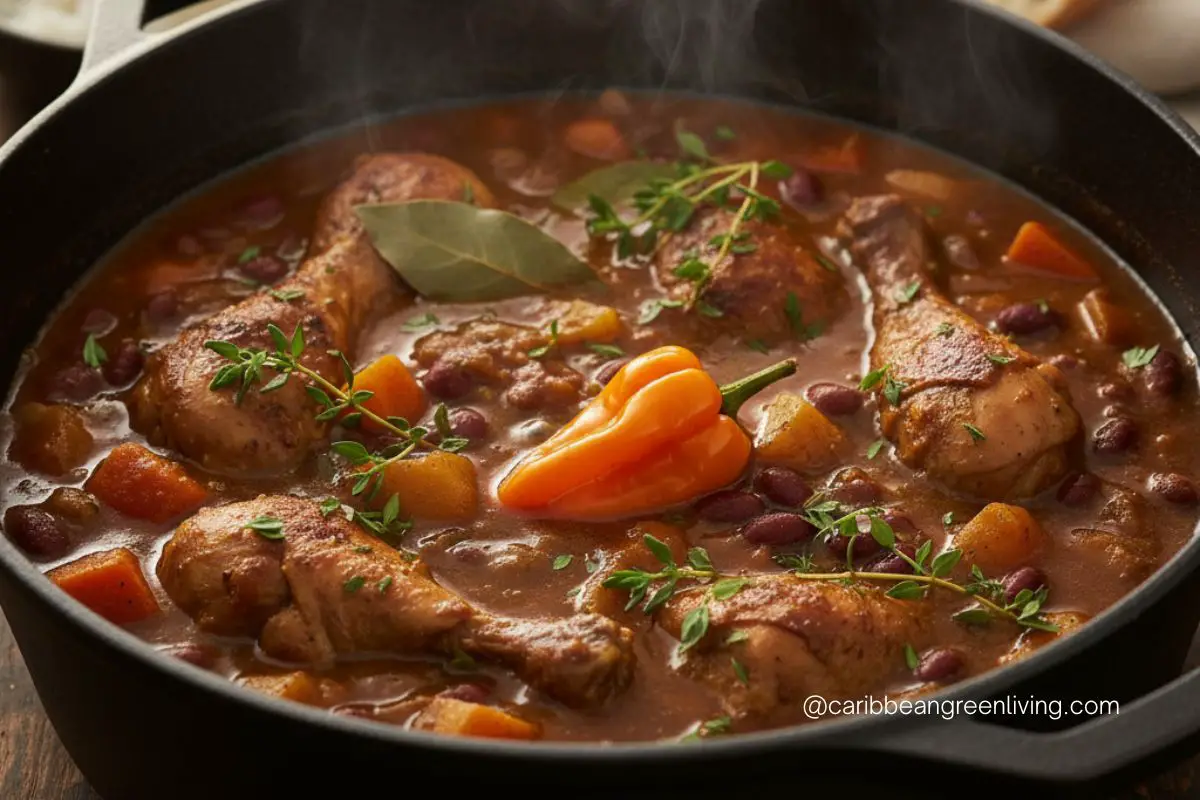
The Right Tools for the Job: Choosing Your Pot
While the ingredients and techniques are paramount, the vessel you cook in also plays a crucial role, especially when it comes to browning and simmering. Not all pots and pans are created equal for achieving that authentic Caribbean caramelization.
To truly build those rich, deep flavors the Caribbean way, you’ll want to reach for:
- Heavy-Bottomed Pots and Pans: These distribute heat more evenly and retain it better than thin-bottomed cookware. This even heat is essential for preventing hot spots that can burn ingredients rather than brown them slowly and consistently.
- Dutch Ovens: A favorite for many Caribbean cooks, Dutch ovens (especially cast iron ones) are perfect. Their heavy construction, tight-fitting lids, and excellent heat retention make them ideal for browning meats to perfection and then letting stews simmer for hours, allowing flavors to meld beautifully. The enamel coating on some also makes for easy cleanup.
- Cast Iron Skillets/Pots: Unenameled cast iron is another superb choice. It excels at retaining and distributing heat, creating an incredibly even cooking surface that’s fantastic for developing those dark, caramelized crusts on meat and vegetables. Over time, it also builds up a natural seasoning that enhances flavor.
Using a flimsy, lightweight pot can lead to uneven cooking, scorched bits, and less-than-ideal caramelization, missing out on those signature rich depths that define Caribbean one-pot meals. Investing in good, sturdy cookware is investing in the flavor of your food!
heck out the cooking essentials from noubess.com
By following these steps—starting with a sautéed aromatic base, moving to an herbaceous seasoning like Epis, building color with browning, and finishing with a patient simmer—you will move beyond simply seasoning your food and begin to truly build flavor. This is the key to authentic, crave-worthy Caribbean cooking.
Check out our recipe index for stews and soups recipes



